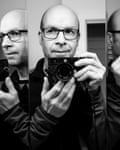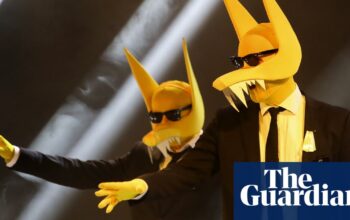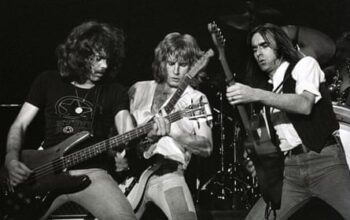I
In the late 1980s, I was employed at Sub Pop records in Seattle where I had various responsibilities, including in-house photography. One evening, I attended a show for the label’s new signings, Nirvana, but I didn’t understand their music. I was unimpressed, and I even chose not to take photos that night. However, my perspective quickly changed when I heard their debut album, Bleach, and was blown away. At their next show, I was amazed by their transformation. Frontman Kurt Cobain was performing energetic jumps, making the show wild and lively. I continued to take photos of the band for years, capturing thousands of moments. They were familiar with my work even before I had met them officially as a band, so I believe they trusted me from the beginning. This was also the case with other grunge bands I photographed – I was just a local guy, not an outsider from places like New York or London.
Seattle was known for its lively crowds. They were passionate and energetic without being aggressive. To me, it felt instinctual to incorporate the audience into my pictures, as it contributes to the cathartic relationship between musicians and their supporters.
Although known as a “people photographer”, I tend to be introverted. However, I share this trait with Kurt. On stage, we both became more open: it was the perfect space to express ourselves and block out everything else. That’s how I felt with a camera in my hands. My approach to photography is relaxed and flexible, and I enjoy being fully engaged, often dancing while taking photos. Bands also appreciated this approach.
This photo was captured during a Nirvana concert in Washington in 1990 and it was a wild one. There were numerous stage divers and bodies moving around vigorously. I was standing near the PA system on the left side of the stage when the person next to me suddenly climbed to the top of the amplifier. He was standing with his knees bent, dancing and provoking the crowd. I pulled on his pants and warned him, “Hey, don’t do it!” I feared he would hurt himself. But he ignored me, so I decided to prepare for the shot. I had my Nikon FE2 camera with a 24mm lens and always used an off-camera flash connected by a cable. I focused the camera on the area where I thought he would land and held the flash above my head. Just two seconds later, he jumped and I got the perfect shot. He didn’t hold back either, it was a real leap. Amazingly, the audience caught him.
This photo has become a symbol, and I don’t feel the need to downplay that. It captures not only a musical moment, but also a larger cultural moment. Every person in the photo is completely immersed in the music in their own unique way. Interestingly, two of my good friends who are now in a long-term relationship were both present in the photo, although they didn’t meet until two years later. I find that incredible.
This image captures a special time in my life. I had the freedom to take these photos without any limitations or restrictions. A lot of my assignments at the time were mundane, posed shots, so I took the initiative to go out and capture live performances because I knew that was where my true artistic expression lay, and what I believed would have lasting impact. It was a truly innovative time, as the bands also had no constraints or obligations. We were able to collaborate and explore together.
Capturing Nirvana in its earliest stages, I first witnessed Kurt as the shy outsider in the corner, and witnessed his transformation into a near-deity of rock. It was quite ridiculous and undeniably happened too quickly. However, my photos do not focus on the band or Cobain, but on the music itself. My intention was for them to truly encompass the essence of the music. Images such as this one serve as a reminder of the significance of Nirvana in the beginning: their music and how they delivered it.
Exclude the advertisement for the newsletter.
after newsletter promotion
Charles Peterson’s CV

Display the image in full screen mode.
Born: Longview, Washington, 1964.
“I have completed a Bachelor of Fine Arts degree at the University of Washington.”
Some of my inspirations are Garry Winogrand, Larry Fink, and Werner Bischof.
High point: “Sitting next to the legendary Jim Marshall on a panel of rock photographers”
I struggle whenever I am requested to provide another photograph for a memorial.
Valuable advice: “Bend your knees, react quickly, check behind you, and remain relaxed.”
Source: theguardian.com


